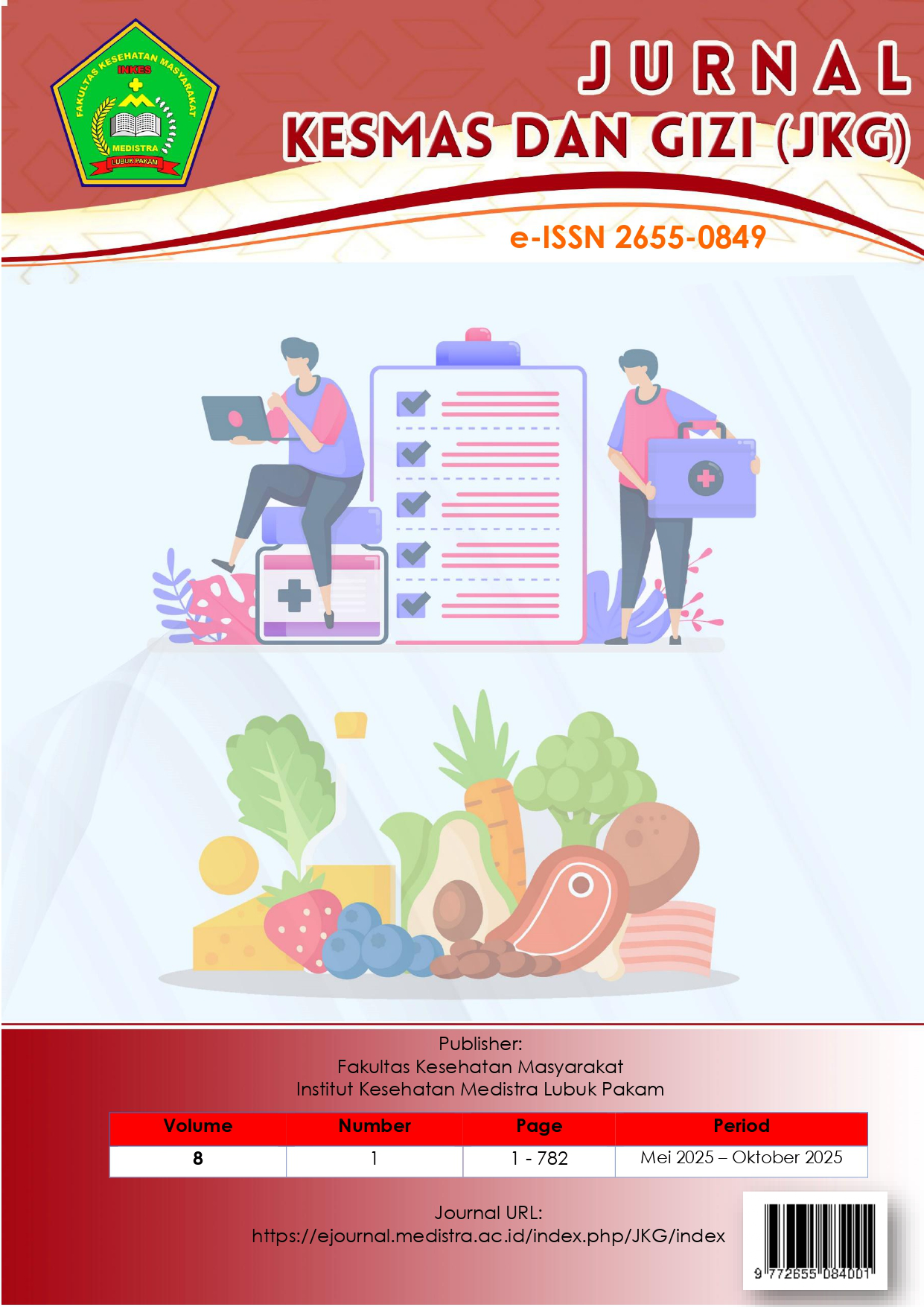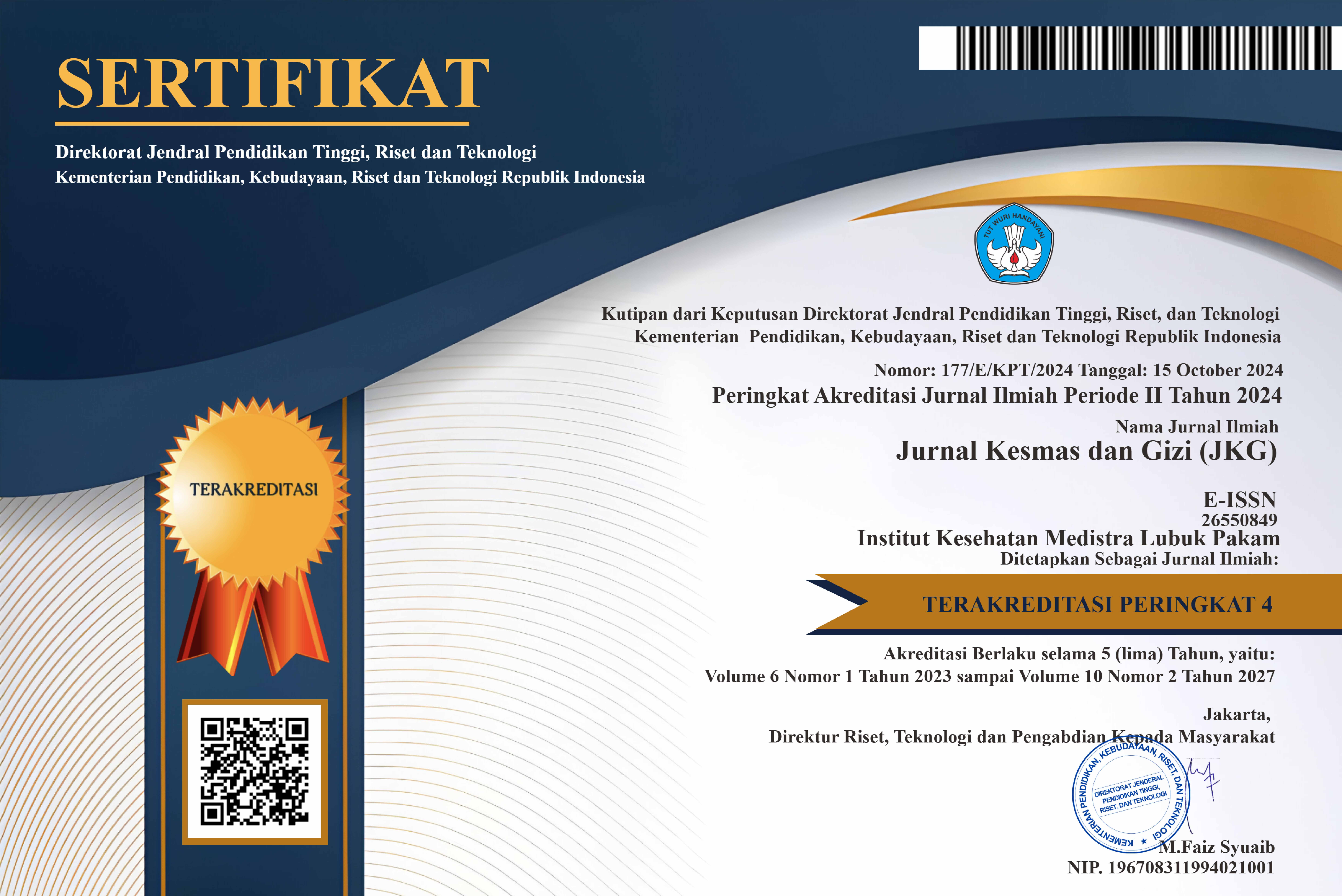The Effectiveness of a Comprehensive Intervention Model in Managing Anxiety in Emergency Patients
DOI:
https://doi.org/10.35451/w0a6ww69Keywords:
Anxiety, Emergency patients, Comprehensive intervention, Emergency nursingAbstract
Anxiety is one of the psychological problems often experienced by patients in the Emergency Department (ED), where this condition can affect comfort, compliance with medical procedures, and hinder the treatment and recovery process. Managing anxiety in emergency patients cannot be done through a single intervention, but requires a comprehensive approach. Comprehensive interventions that combine elements of education, therapeutic communication, distraction therapy, and family support are considered more effective in helping patients manage anxiety while in the ED. Based on this, this study aims to evaluate the effectiveness of a comprehensive intervention model in reducing anxiety levels in emergency patients. The study used a quasi-experimental design with a pre-test and post-test approach and involved 100 emergency patients as samples. Anxiety levels were measured using the Self-Rating Anxiety Scale (SAS), and data analysis was performed using the Wilcoxon Signed Ranks Test. The results showed that before the intervention, most patients (63%) were in the moderate to severe anxiety category, and 15% experienced severe anxiety. After the comprehensive intervention, there was a shift in the distribution of anxiety, with 67% of patients in the mild to moderate anxiety category and 19% in a normal condition. Statistical test results showed a significant difference between anxiety scores before and after the intervention.
Downloads
References
[1] M. Arjmandy, M. Shafiei, and S. Khezri, “Surgery in Practice and Science The effect of Guided imagery on perioperative anxiety in hospitalized adult patients : A systematic review of randomized controlled trials,” Surg. Pract. Sci., vol. 18, no. April, p. 100255, 2024, doi: 10.1016/j.sipas.2024.100255.
[2] C. Berna et al., “Is Positive Communication Sufficient to Modulate Procedural Pain and Anxiety in the Emergency Department ? A Randomized Controlled Trial,” vol. 0, no. December, pp. 772–777, 2023, doi: 10.1097/PSY.0000000000001246.
[3] A. Mar and O. F. Moreno, “Effect of Live Environmental Music Therapy and Prerecorded Music on State Anxiety , Stress , Pain , and Well-Being Levels of Patients and Caregivers in the Emergency Department Waiting Room : Protocol for a Multicenter Randomized Clinical Trial Correspond,” vol. 14, pp. 1–9, doi: 10.2196/69131.
[4] P. Abdi, Z. Borzabadi, S. Zohari, M. Nasiri, A. Ziapour, and V. Hatami, “African Journal of Emergency Medicine Effect of family presence on pain and anxiety levels among patients during invasive nursing procedures in an emergency department at a public hospital in Western Iran,” African J. Emerg. Med., vol. 11, no. 1, pp. 31–36, 2021, doi: 10.1016/j.afjem.2020.11.003.
[5] S. Kim, H. Chang, T. Kim, and W. C. Cha, “Patient Anxiety and Communication Experience in the Emergency Department : A Mobile , Web-Based , Mixed-Methods Study on Patient Isolation During the COVID-19 Pandemic,” vol. 38, no. 39, pp. 1–15, 2023.
[6] C. See, M. Ng, and J. Ignacio, “Effectiveness of music interventions in reducing pain and anxiety of patients in pediatric and adult emergency departments : A systematic review and meta-analysis,” Int. Emerg. Nurs., vol. 66, no. October 2022, p. 101231, 2023, doi: 10.1016/j.ienj.2022.101231.
[7] J. M. Wilson, “Randomized Trial of Self-Selected Music Intervention on Pain and Anxiety in Emergency Department Patients with Musculoskeletal Back Pain,” vol. 26, no. 4, pp. 1112–1119, 2025, doi: 10.5811/westjem.34871.
[8] K. Hoek, L. Suur, M. Van Velzen, and E. Sarton, “Therapeutic Communication , a Nursing Educational Program , Implementation and Analysis , study protocol of a mixed methods design Table of Contents,” 2024.
[9] C. Angkoontassaneeyarat, P. Detsurang, and P. Vichiensanth, “The effect of music therapy on treating patients pain and anxiety in emergency department : a randomized controlled trial,” vol. 4, 2025.
[10] C. Brousseau-paradis, C. Genest, N. Maltais, M. Séguin, J. Rassy, and C. Brousseau-paradis, “Towards a Better Use of Safety Planning in Emergency Departments : An Exploratory Study of Patients and Clinicians ’ Perspectives,” Community Ment. Health J., pp. 724–733, 2025, doi: https://doi.org/10.1007/s10597-024-01394-0.
[11] E. Charlotte and M. Jenna, “Western Journal of Emergency Medicine : Integrating Emergency Care with Population Health Randomized Trial of Self-Selected Music Intervention on Pain and Anxiety in Emergency Department Patients with Musculoskeletal Back Pain,” West. J. Emerg. Med. Integr. Emerg. Care with Popul. Heal., 2025, doi: 10.5811/westjem.34871.
[12] L. O.-D. and S. S.-M. Eloy Sánchez-Caballero, “Immersive Virtual Reality for Pain and Anxiety Management Associated with Medical Procedures in Children and Adolescents : A Systematic Review,” MDPI Child., 2024, doi: https://doi.org/10.3390/children11080975.
[13] M. Fang Chen, MMa, Jingyuan Jiang, MM, Xiaoli Chen, MM, Dongmei Diao, MM, Xing Xia, MM , Lei Ye, “Impact of a standardized quality care model on anxiety in patients retained in the emergency department,” Medicine (Baltimore)., vol. 15, no. March, 2025, doi: http://dx.doi.org/10.1097/MD.0000000000042073.
[14] S. Paslı, N. Samet, Y. Esma, N. Kırımlı, M. İmamoğlu, and M. Fatih, “The effect of virtual reality applications on the anxiety levels of emergency department physicians during 24 ‑ h shifts,” Intern. Emerg. Med., no. 0123456789, 2025, doi: 10.1007/s11739-025-03947-x.
[15] A. Vaisi-raygani, M. Moradi, N. Salari, and Z. Fattahi, “Resilience and nursing care quality in emergency departments : a 2024 study in Kermanshah , Iran hospitals,” BMC Nurs., 2025, doi: Vaisi-Raygani et al. BMC https://doi.org/10.1186/s12912-025-03749-8.
[16] P. I. M. Jr, J. A. Lee, C. A. Hall, and J. A. Kline, “Anxiety about anxiety : a survey of emergency department provider beliefs and practices regarding anxiety-associated low risk chest pain,” BMC Emerg. Med., pp. 1–7, 2018, doi: https://doi.org/10.1186/s12873-018-0161-x.
[17] S. C. Sung et al., “Protocol for a multi ‑ site randomized controlled trial of a stepped ‑ care intervention for emergency department patients with panic ‑ related anxiety,” BMC Psychiatry, pp. 1–10, 2022, doi: 10.1186/s12888-022-04387-z.
[18] M. Qian Huang, MM, Xiaoli Chen, MM, Ling Zhu, MM, Dongmei Diao, MM, Lei Ye, “A survey of anxiety and analysis of the factors influencing it in patients staying at the emergency department of a large comprehensive tertiary care center,” Medicine (Baltimore)., vol. 28, no. June, 2025, doi: Copyright © 2025 the Author(s). Published by Wolters Kluwer Health, Inc. This is an open-access article distributed under the terms of the Creative Commons Attribution-Non Commercial License 4.0 (CCBY-NC), where it is permissible to download, share, remix, transform, and buildup the work provided it is properly cited. The work cannot be used commercially without permission from the journal. How to cite this article: Huang Q, Chen X, Zhu L, Diao D, Ye L. A survey of anxiety and analysis of the fa.
[19] C. V. and A. A. Alexandros Argyriadis, Louiza Ioannidou, Ioannis Dimitrakopoulos, Maritsa Gourni, Georgia Ntimeri, “Experimental Mindfulness Intervention in an Emergency Department for Stress Management and Development of Positive Working Environment,” Healthcare, 2023, doi: Healthttps://doi.org/10.3390/healthcare11060879.
[20] S. A. P. and L. P. B. Målfrid A. Nummedal, Sarah King, Oddvar Uleberg, “Non ‑ emergency department ( ED ) interventions to reduce ED utilization : a scoping review,” BMC Emerg. Med., pp. 1–18, 2024, doi: 10.1186/s12873-024-01028-4.
[21] S. K. and C. S.-L. Benedikt Schick, Benjamin Mayer, Constanze Hensel, Sebastian Schmid, Bettina Jungwirth, Eberhard Barth, Claus-Martin Muth, “Medical experience as an influencing parameter in emergency medical care for psychiatric emergencies : retrospective analysis of a multicenter survey,” BMC Emerg. Med., pp. 1–9, 2023, doi: https://doi.org/10.1186/s12873-023-00883-x.
[22] L. and L. T. Cantu, “Baseline well-being , perceptions of critical incidents , and openness to debriefing in community hospital emergency department clinical staff before COVID-19 , a cross-sectional study,” BMC Emerg. Med., vol. 5, pp. 1–8, 2020, doi: https://doi.org/10.1186/s12873-020-00372-5.
Downloads
Published
Issue
Section
License
Copyright (c) 2025 Ultra Madani, Ade Kartika

This work is licensed under a Creative Commons Attribution 4.0 International License.
Copyright in each article is the property of the Author.


























